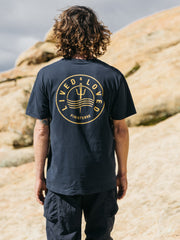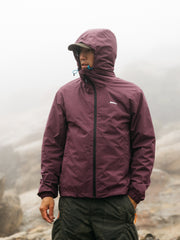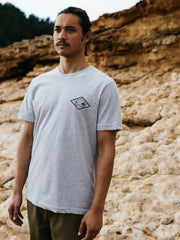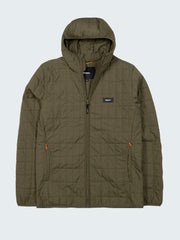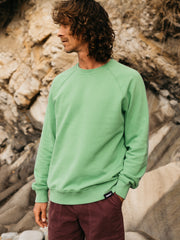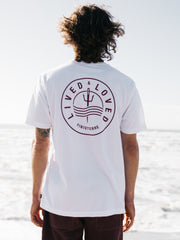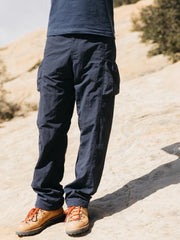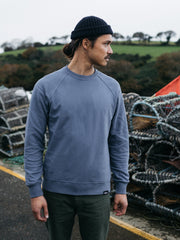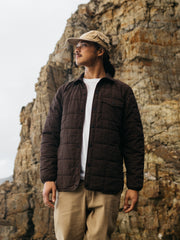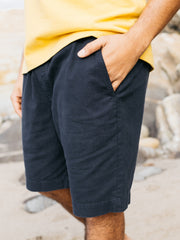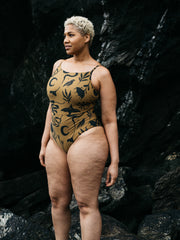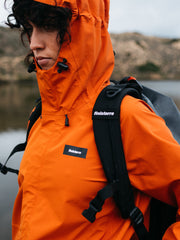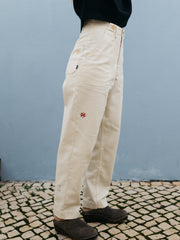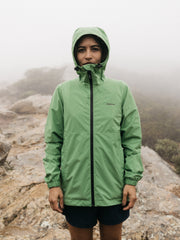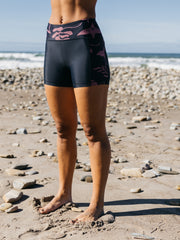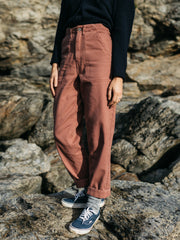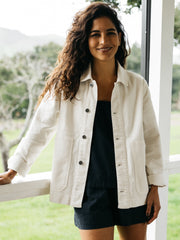Microfibres: The Story So Far
01.20.21
4 min read
Images in order of appearance by Nomad Mneumonics, Bonita Baker-Robins & Sophie Dingwall. All images courtesy of eXXpedition Round the World
Finisterre define the microfibre problem as fibres which are released from textiles through fabric production and consumer use – largely from the washing of clothes at the consumer stage. The issue has been widely misreported, and is often lumped in with the debate on microplastics, but sadly it is a problem that affect most textiles; from cotton to synthetic fibres. These small fragments of fibre find their way into the water system and ultimately make their way all the way to the sea where they affect the marine environment and may be mistaken for food by fish and other wildlife, eventually making their way into our own food chain.
One of the greatest challenges we face in tackling this issue is that research on microfibres is still very much in its early stages. It’s not as simple as saying some textiles are good, and some are bad. There simply isn’t yet enough knowledge within the scientific community to give us definitive answers, which is why Finisterre has taken the approach to back the science and avoid jumping to any conclusions until the findings are in.
The scale of the problem means it’s an issue that can only be solved with collaboration across brands, industry partners and scientists. We all need to work together, and that’s why in 2018 Finisterre became a founding member of The Microfibre Consortium – a collection of brands and manufacturers pushing for further research and practical solutions to be used within the textile industry. As a producer of clothing and with our passion to protect the natural world, we feel a huge responsibility to understand and reverse the impact of the microfibres problem.
We made this film in 2018 as part of our Microplastics Collection, and its message rings as true today as it did when we made it. Now though, we know that microplastics aren't the only problem.
Let’s be honest; we know that every product we make comes with some cost to the environment. So at Finisterre we’re committed to minimising that cost wherever possible – from working with pioneers in sustainable manufacture, to selecting the most low impact materials available, championing recycled fabrics that last a lifetime and organic textiles that slash the water usage for the same product. We’re also investing in sustainable innovation in the sphere of bioplastics and biodegradable plastics, from product to packaging, including our Leave No Trace product bags. These materials offer an exciting prospect for the future of plastic; keeping all the useful bits of plastic in – like durability and longevity – but minimising the environmental impacts at the end of life.
As a brand Finisterre use an even balance of both natural fibres and synthetics, with our top textile use shared across organic cotton, recycled polyester and wool. Wool in particular has come out as one of the positive stories in this debate, with a spectrum of scientific studies suggesting that it is likely to break down before reaching the marine environment, and as wool is naturally antibacterial it requires less washing anyway. We've made a commitment to increasing wool content in our products and reducing non-biodegradable blends across the range.
It’s a start, but there is much to be done to address the microfibre issue and so in 2022 we signed the Microfibre 2030 Commitment. This formal commitment brings together brands, industry partners and scientists to contribute to the development of knowledge and the identification of fibre fragmentation solutions. In 2023 we will also begin testing a selection of our own fabrics to aid this research.
If you’re particularly worried about your clothes shedding microfibres when you wash them, there are things you can do to help minimise their impact:
Wash less, wear more
Microfibres shed in the wash, so the less you wash your garments, the fewer microfibres you’re producing – as well as saving water. Products like outerwear, denim or wool knitwear really don’t need washing as often as you think, so try to only wash your gear when absolutely necessary.
Filter your fibres
Using a washing machine filter can aid the capture of microfibres before they enter the water system, and products like the Guppyfriend™ bag have been shown to trap over 90% of microfibres shed as part of a normal wash.
Love your gear for longer
Ultimately, the most sustainable product is the one you already own. By reducing the consumption of new products and keeping your gear going, less new clothing is produced, reducing the wider problem on the manufacturing end. That’s what our Lived & Loved repairs service is here for – breathing new life into old favourites and saving them from landfill.
These are not solutions to the wider issue. But, as we wait for the science to show us the way forward, we’re committed to championing ways to reduce the impact of our products as much as possible. The Marine Conservation Society are currently calling for legislation that will require washing machine manufacturers to fit microfibre filters in all new domestic and commercial machines as standard by 2023. Although we still believe this is not an ultimate solution, we're adding our voice to their campaign to 'Stop Ocean Threads'. To find our more and sign the 'Stop Ocean Threads' petition, check out the link below.
The microfibres problem will not be resolved by a single brand or industry sector, nor is it the responsibility of the consumer. It is a complex and intertwined issue which is going to take true collaboration, a fresh approach and real innovation to solve. As we learn more we will continue to refine our range and manufacturing practices, sharing our journey with our community and empowering them with the knowledge to take action in their own lives.






